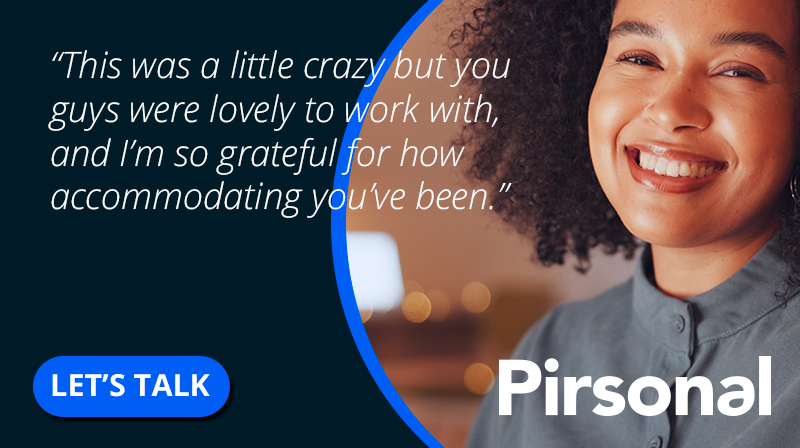Every December, brands rush to summarize the year with dashboards, emails, and PDFs. But in 2025, something has shifted.
Customers don’t want summaries.
They want stories.
They want to see themselves inside your product.
They want to feel progress—not just read it.
They want a moment that says:
“This year, something meaningful happened because you showed up.”
And that’s why Year-in-Review videos—especially personalized ones—are quietly becoming one of the most effective (and surprisingly underused) retention levers for CMOs across SaaS, education, fintech, and membership-based organizations.
This isn’t a “trend.” It’s the normalization of a communication format that speaks the emotional language customers respond to, in their favorite format.
And one program, Fundación Vodafone’s Digicraft, offers a clear window into what’s coming next.
Year-in-Review Campaigns Have Outgrown the Marketing Department
A few years ago, Year-in-Review content lived almost exclusively in marketing. Today, that’s no longer the case. CMOs tell us they’re now being pulled into conversations with:
- Customer success (retention)
- Product (in-app messaging)
- Enablement (partner communication)
- HR (employee engagement)
- Compliance (data privacy)
- Executive stakeholders
The expectation is simple:
The organization needs a moment that captures progress and reinforces the value of the relationship.
The problem?
The classic formats simply can’t carry the weight. Why?
- Emails get skimmed.
- PDFs get downloaded and forgotten.
- Dashboards require cognitive effort.
- Static content feels impersonal at scale.
- And none of these create the emotional lift needed to improve retention.
This is where personalized video with scalable software like Pirsonal has entered the conversation—not as a “cool” format, but as a strategic asset.
The Real Question CMOs Are Asking Now
Not “should we personalize?”
But:
“How do we create something meaningful at scale—without creating burnout for marketing, product, or engineering?”
This is the tension CMOs face:
| What Leaders Want | What Teams Can Support |
| A moment users will remember | Minimal dev involvement |
| A celebration of progress | No new systems to maintain |
| A differentiated experience | Compliance-friendly workflows |
| Something creative | Predictable execution |
| A format customers actually watch | No bottlenecks during launch |
The only way to satisfy both sides is with a structure that reduces complexity without reducing quality.
That’s what makes the Digicraft initiative so instructive.
What Digicraft Did Differently
Let’s be clear: Digicraft didn’t set out to “make a video.”
Their strategic goal was bigger. In our words:
“Help every learner see their own progress in a way that builds confidence and strengthens long-term engagement.”
Here’s what made their approach notable:
1. They treated data as storytelling material
Most platforms collect usage data. Very few turn it into a personal narrative.
Digicraft used:
- Achievements
- In-app progress
- User photos
- Saved milestones
This is data most SaaS platforms already have—they just don’t use it narratively.
2. They built a cross-functional execution model
A creative agency handled the storytelling. A dev agency handled the API. Pirsonal handled the automation, personalization, and security. In simple terms:
- Each team operated inside its strength.
- No department was overloaded.
This is the future of scalable personalization when it comes to video creation.
3. They delivered the videos inside the app
This is where CMO strategy is evolving.
Not email → open → landing page → video
But:
Open app → get your personalized story instantly. While you still get the email. This approach:
- Its increases your conversions as you multiply channels.
- It removes friction.
- It increases completion rates.
- It centers the experience where the user already is.
4. They operationalized it for multiple years
The magic wasn’t the video itself. The magic was that the system now exists. Every year, the creative can evolve—but the infrastructure remains. CMOs love this because it turns a one-off project into an annual loyalty driver. It also protects their marketing budget.
Why Personalized Year-in-Review Works (Backed by Psychology & Behavior)
You can’t understand the power of these campaigns without understanding emotional drivers.
Personalized recap videos like this one activate four of the strongest motivators in customer psychology:
- Accomplishment: “Look what you achieved.”
- Belonging: “You’re part of something bigger.”
- Identity: “This says something meaningful about who you are.”
- Confidence in the future: “You’re making progress. Keep going.”
CMOs don’t need more vanity metrics. They need communication that:
- Reduces churn
- Reinforces value
- Increases repeat usage
- Creates internal alignment
- Strengthens brand trust
Year-in-Review videos address each of these in a single asset.
The Part Most CMOs Miss: This Is Not About Video. It’s About Memory.
A Year-in-Review is one of the few moments in the customer lifecycle where a brand can create a peak emotional moment.
Peak moments stick.
Peak moments spread.
Peak moments influence the next year’s engagement.
When done well, a personalized recap video becomes:
- The most-watched asset of the year
- The most shared
- The most referenced in renewal conversations
- The most appreciated by users
- The easiest asset to justify to the CFO
This is why companies like Spotify, Duolingo, Strava, Notion (and soon many others) have normalized the mindset:
“If we have the data, we should tell the story.”
A Replicable Framework for CMOs Planning a Year-in-Review Initiative
If you want to build your own version, whether for consumers, customers, members, students, partners, or employees, here’s the model CMOs are using:
- Start with the narrative, not the data. What story are you telling? What identity are you strengthening?
- Choose 4–7 data points that reinforce that narrative. The power is in simplicity. Use the data to help contacts understand THEIR story. Not just your brand’s.
- Involve your creative partner early. They define the emotional arc.
- Bring product/engineering only for the API touchpoints. This keeps the project light.
- Use a video personalization platform like Pirsonal—not custom infrastructure. You cannot afford fragility in December.
- Deliver it where users already are. Inside the app, inside the portal, or via personalized landing page.
- Treat it as a reusable system. The first year builds the foundation. Every year after becomes cheaper, faster, and more impactful.
What CMOs Should Take Away From the Digicraft Example
This is not an “education app story.” This is a category shift in how organizations communicate value. The CMOs who win the next 24 months will be the ones who realize that:
- Personalization is no longer a novelty
- Stories outperform reports
- Emotional resonance increases retention
- Identity beats information
- Year-in-Review is a loyalty asset, not a marketing asset
- You already have the raw materials
And the brands that act now will set themselves apart long before this becomes standard practice.
If You’re Exploring a Year-in-Review or Personalized Statement for 2025, This Is the Moment
Whether your audience is:
- customers
- users
- partners
- employees
- learners
- members
…you already have data that tells their story.
Pirsonal helps you turn that data into a personalized, automated video experience. These video experiences are designed with your creative teams, embedded anywhere, and scalable every year.
If you want to explore what this could look like for your brand, talk to Pirsonal today. We’ll help you map it, involve your agency, and plan the technical flow—without adding complexity to your teams. Or will take care of every detail.

